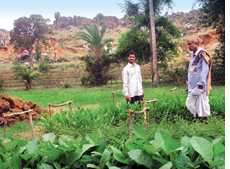After a year's gap, Olive Ridley turtles have started mass-nesting at the Rushikulya rookery in Orissa's Ganjam district. On Tuesday night, around 15,000 turtles reached the beach. Their number grew to around 35,000 by Wednesday night, said A.K. Jena, Divisional Forest Officer (DFO), Berhampur. He expects more turtles to come in over the next few days, for congregations of thousands of turtles are waiting off the coast. It is the first episode of mass nesting of these endangered marine turtles on the Orissa coast this year. Mass nesting occurs regularly at the Rushikulya rookery, the Devi river rookery and the Gahirmatha beach in Orissa. But last year there was no mass nesting at the Rushikulya river mouth, where in 2006 it occurred twice. "It speaks of our limited knowledge about the habits and habitats of these marine turtles,' said Mr. Jena. Female Olive Ridleys can store sperms without fertilisation inside their body up to three years. Forest Department officials, experts from the World Wide Fund for Nature (WWF) and the Wild Life Institute of India, Dehra Dun, are monitoring the mass nesting. The 3-km stretch of beach where the turtles are laying eggs has been divided into 100-m segments. There are 35 sampling points within this area to record data on the reptiles reaching the coast to lay eggs. Fishermen have been requested not to fish in the region where the turtles are waiting in the sea. Tourists are also under strict watch to ensure silence and darkness on the beach, which are important factors for turtles, said Mr. Jena. Over the last four days, fishermen from villages such as Purunabandh and Gokharkuda are working as volunteers for the Rushikulya Sea Turtle Protection Project. They are helping protect turtles clambering up the sandy beach after midnight to dig holes with their flippers to lay around 20 to 30 eggs each. They cover the eggs with sand and venture into the sea by morning. Lying buried in sand, the eggs hatch after 45 days.


